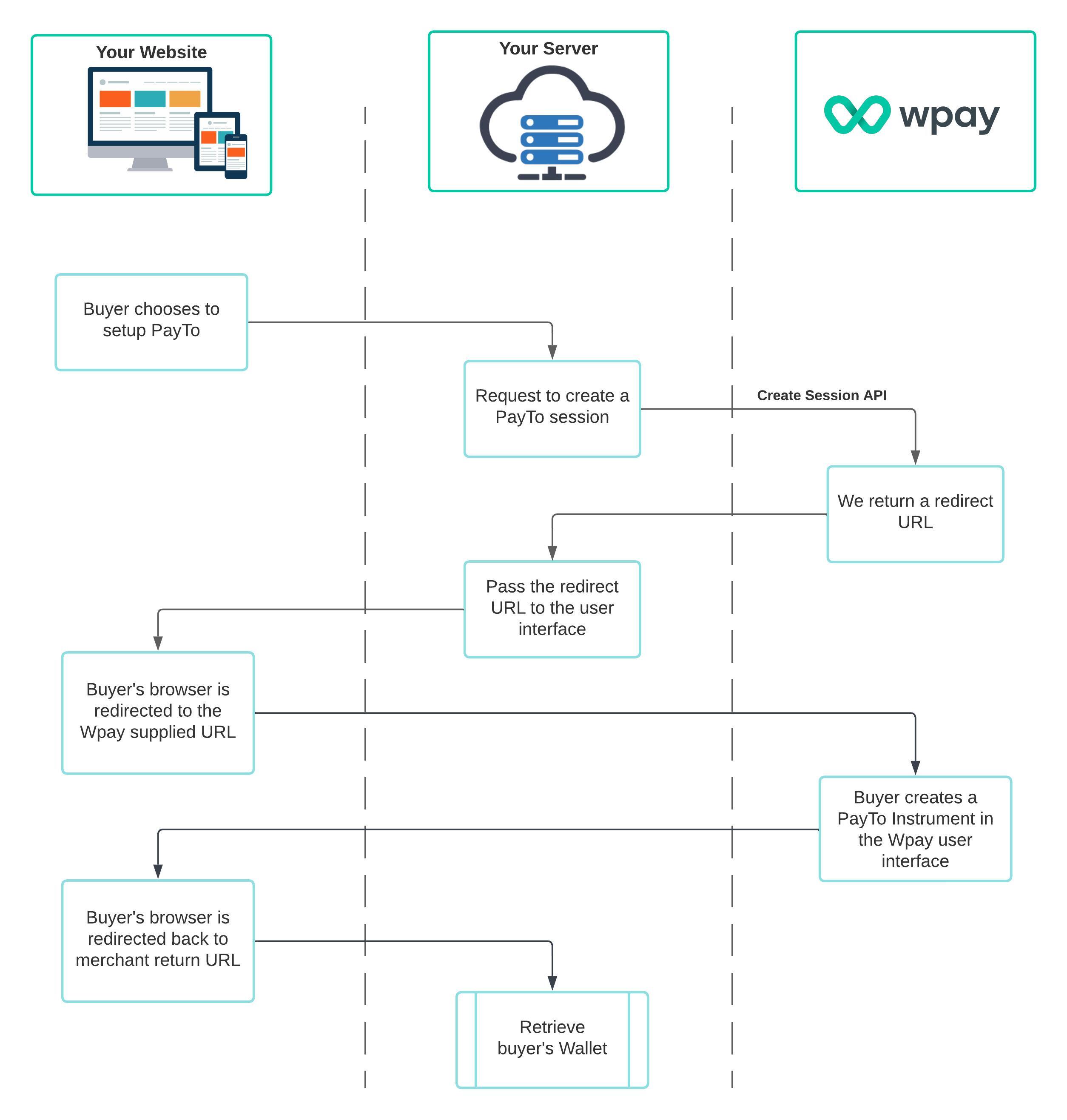Overview of Instrument Creation
In order to provide the best PayTo customer experience and accommodate a range of retail use-cases, we have developed two methods for creating a new PayTo instrument.
1. Using a redirect Checkout Session
We recommend using the Checkout Session method when the buyer has selected to pay with PayTo and does not yet have a saved PayTo instrument available for making the payment.
The Checkout Session method allows the buyer to create a new PayTo instrument and initiate the payment within the same redirect process flow.
The Checkout Session method is designed to handle both checkout use-cases:
- Buyer choosing to save the payment instrument for future use.
- Buyer choosing NOT to save the payment instrument.
The Checkout Session is the ideal method for guest checkout.
2. Using a redirect Instrument Session
We recommend using the Instrument Session method when the buyer adds a new PayTo instrument to their digital wallet without immediately initiating a payment.
The Instrument Session allows the buyer to create a new ongoing PayTo instrument and save it into their digital wallet for future use.
The Instrument Session method can only be used when the buyer is authenticated by the merchant.
There buyers are able to create new PayTo Instruments, and have them automatically saved in their wallet for future use.
The below diagram illustrates the flow of creating a new PayTo Instrument in the checkout

Updated 6 months ago
